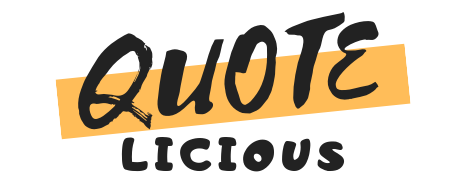Fabulous Tools for Using Music to Enhance Learning
Music has long been known to have a positive effect on people’s mental and physical health. It can be used to elevate people’s moods, reduce stress levels, and provide motivation. In the classroom, music can also be used as an effective tool for enhancing learning. Studies have shown that incorporating music into lessons can improve memory retention, stimulate creativity and imagination, enhance problem-solving skills, increase focus and engagement, and even reduce stress levels.
The use of music in the education system is not a new concept; it has been around since Ancient Greece when Pythagoras composed musical scales to aid his students in understanding mathematics. However, modern teachers have access to a variety of tools which they can use to incorporate music into their classroom instruction.
In this article, we’ll discuss the benefits of using music to enhance learning, the types of music which can be used for educational purposes, and tips for incorporating it into your lesson plans. Let’s get started!
Benefits of music in the classroom
Music has a wide range of benefits for students in the classroom:
Improved memory retention
Research has shown that students who listen to music while studying or taking exams have improved memory retention compared to those who don’t. This is because music triggers the release of dopamine, a neurotransmitter which is associated with enhanced memory recall and improved focus.
Stimulated creativity and imagination
Music can stimulate creativity by stimulating parts of the brain associated with emotions, imagination and problem-solving. This can help students think outside the box and come up with creative solutions to problems.
Enhanced problem-solving skills
Listening to music can also help students strengthen their problem-solving skills by teaching them how to identify patterns and develop analytical thinking.
Improved mood and stress reduction
Music has been shown to reduce stress levels and improve moods, which can help students stay focused on their studies instead of getting distracted by negative thoughts or feelings of anxiety. For larger projects such as dissertation writing, https://typemyessay.me/service/buy-dissertation/ can provide invaluable help to students trying to stay focused on their work.
Increased focus and engagement
Studies have also shown that music can increase focus in the classroom by providing a distraction from the noise around us, allowing us to be more productive and engaged with what we’re doing.
Types of music for educational purposes
There are many types of music that can be used for educational purposes, each with their own unique set of advantages.
Classical music
Classical music can be used to help students focus on their studies by providing a calming atmosphere which encourages concentration. It is also a great way to introduce young children to the world of music as it often contains elements such as strong melodic patterns, interesting harmonic progressions, and polyphonic textures which can be used to teach basic musical concepts.
Popular songs with educational themes
Popular songs are an effective tool for teaching students about a variety of topics ranging from history and science to math and language arts. These songs provide an entertaining medium through which teachers can communicate important information in an engaging way.
Instrumental music
Instrumental music can be used to help students relax and focus on the task at hand while also introducing them to different genres of music. It is also an effective tool for teaching musical concepts such as rhythm and improvisation, which are important skills for any musician.
Nature sounds and atmospheric music
Nature sounds and atmospheric music are great for creating a peaceful atmosphere which can help students relax and focus on their studies. This type of music is also effective for stimulating creativity and imagination as it often contains elements such as bird songs, water sounds and wind chimes.
Tips for using music to enhance learning
It’s no wonder that music can be a powerful tool for helping students learn new material. Here are some tips for using music to enhance learning:
Select appropriate genres, styles, and contexts
Music can be used to set the tone for learning by selecting genres that support a specific subject matter or lesson plan. For example, classical music is great for stimulating concentration and creativity while jazz can be used to enhance problem solving skills. Likewise, different styles of music, such as rock and roll or hip hop, may help students identify with certain topics. It’s important to consider the context in which the music will be playing so that it doesn’t distract from your objective.
Choose songs with meaningful messages
Not only should you select songs that are appropriate for your audience but also those that contain meaningful messages. Depending on the topic, you may choose songs that touch on emotions, such as empathy or joy. You can also use music to help discuss topics like bullying and acceptance by finding relevant lyrics.
Create a playlist that accompanies your learning goals
When creating a playlist for your classroom, think about the types of activities students will be doing while listening to it. This could include activities such as reading, writing, or drawing. The music should match the tasks at hand in order to create an ideal learning environment. Also consider incorporating some instrumental pieces for moments of silent reflection and focus.
Use variety and balance when introducing music in the classroom
Don’t overdo it with one type of genre or style. Mixing up the music not only helps maintain student interest but also greater appreciation for different musical styles and forms. Aim to use both instrumental and vocal music, as well as upbeat and slow-paced tunes.
Incorporate non-traditional musical elements for more engagement and fun
A great way to make learning more fun is by incorporating non-traditional elements into your playlists. This could include anything from drumming or conducting a class orchestra to setting up an impromptu jam session with various instruments or even recording their own songs. These activities can help students gain a greater appreciation for music while honing their creative skills at the same time.







